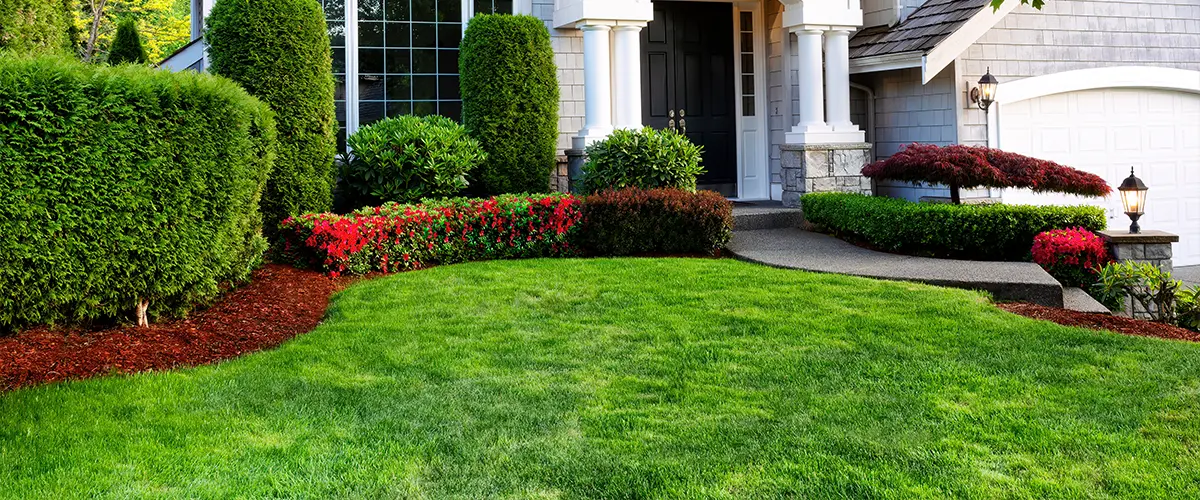Pros and Cons of Dethatching Lawn: A Complete Guide
Have you ever wondered why your once-lush lawn isn’t looking as vibrant as it used to? The culprit might be lurking right beneath the surface – thatch. As a lawn care enthusiast and professional landscaper, I’ve seen how the simple process of dethatching can either make or break a lawn’s health. Let’s dive deep into the pros and cons of dethatching lawn maintenance and help you make an informed decision for your yard.
What Exactly Is Thatch?
Before we weigh the advantages and disadvantages, let’s understand what we’re dealing with. Thatch is that layer of dead grass, roots, and organic matter that accumulates between your living grass and the soil surface. Think of it as your lawn’s version of a memory foam mattress – a little can be comfortable, but too much can cause problems.
The Natural Role of Thatch
Believe it or not, a thin layer of thatch (about ½ inch) can actually benefit your lawn by:
- Protecting grass roots from temperature extremes
- Retaining moisture in the soil
- Providing natural cushioning for foot traffic
- Creating a barrier against weeds
When Does Dethatching Become Necessary?
The Thickness Test
Here’s a simple way to determine if you need to consider dethatching: stick your finger into your lawn. If you can’t easily reach the soil because of a spongy layer of dead grass, you might have a thatch problem. A thatch layer exceeding 1/2 inch typically signals it’s time to take action.
The Pros of Dethatching Lawn Care
1. Improved Nutrient Access
One of the most significant benefits of dethatching is that it opens up your lawn’s access to essential nutrients. Imagine your grass trying to reach through a thick wool blanket to get food – that’s what excessive thatch does. Removing it helps your grass get what it needs to thrive.
2. Better Water Penetration
When you remove excess thatch, you’re essentially unclogging your lawn’s pores. Water can now reach the root system more effectively, leading to:
- Deeper root growth
- More efficient water usage
- Reduced water runoff
- Better drought resistance
3. Enhanced Air Circulation
Just like humans, grass needs to breathe. Dethatching creates airways in your soil that allow:
- Oxygen to reach root systems
- Carbon dioxide to escape
- Beneficial microorganisms to thrive
4. Stronger Root Development
With better access to air, water, and nutrients, your grass roots can grow stronger and deeper. This leads to a more resilient lawn that can better withstand:
- Environmental stress
- Disease pressure
- Pest invasions
- Temperature fluctuations
The Cons of Dethatching Lawn Maintenance
1. Potential Lawn Damage
Let’s be honest – dethatching is not a gentle process. It’s like giving your lawn a deep tissue massage that can sometimes leave it feeling sore. The process can:
- Tear out healthy grass along with thatch
- Expose sensitive roots
- Create bare patches
- Temporarily stress your lawn
2. Recovery Time Required
After dethatching, your lawn needs time to heal. Think of it as lawn surgery – there’s always a recovery period. During this time:
- Your lawn may look worse before it looks better
- You’ll need to water more frequently
- The grass will be more vulnerable to stress
- Weed opportunities may increase
3. Timing Challenges
The timing of dethatching is crucial, and getting it wrong can cause more harm than good. The ideal window for dethatching is narrow:
- Cool-season grasses: early fall or spring
- Warm-season grasses: late spring to early summer
- Never during drought or heat stress periods
4. Cost Considerations
Whether you hire a professional or do it yourself, dethatching involves expenses:
- Equipment rental or purchase
- Professional service fees
- Additional water usage during recovery
- Potential reseeding costs
Best Practices for Successful Dethatching
Preparation Steps
To maximize benefits and minimize drawbacks, proper preparation is key:
- Mow your lawn slightly shorter than usual
- Mark sprinkler heads and other obstacles
- Choose the right type of dethatching equipment
- Check soil moisture levels
Post-Dethatching Care
The success of dethatching largely depends on what you do afterward:
Immediate Care
- Water thoroughly but not excessively
- Remove loose thatch debris
- Apply balanced fertilizer
- Monitor for signs of stress
Long-Term Maintenance
- Adjust mowing heights appropriately
- Implement proper watering schedules
- Consider overseeding bare patches
- Monitor thatch buildup regularly
Alternatives to Dethatching
Core Aeration
Sometimes, core aeration might be a better choice than dethatching, especially if:
- Your soil is compacted
- Thatch layer is minimal
- You want a less aggressive approach
- Your grass type responds better to aeration
Preventive Measures
The best way to deal with thatch is to prevent its excessive buildup:
- Maintain proper mowing heights
- Avoid over-fertilizing
- Practice good watering habits
- Consider grass types that produce less thatch
Making the Right Decision for Your Lawn
Factors to Consider
Before deciding to dethatch, evaluate:
- Your grass type
- Current thatch thickness
- Local climate conditions
- Time of year
- Lawn’s overall health
Professional vs. DIY
Consider these aspects when choosing between hiring a professional or doing it yourself:
- Equipment availability
- Lawn size
- Personal expertise
- Budget constraints
- Time availability
Common Mistakes to Avoid
Timing Errors
Don’t dethatch:
- During periods of drought
- In extreme heat
- When grass is dormant
- Too frequently
Technical Mistakes
Avoid these common errors:
- Setting dethatching depth too deep
- Using the wrong equipment for your grass type
- Dethatching wet soil
- Ignoring post-dethatching care
When to Skip Dethatching
There are times when dethatching might do more harm than good:
- New lawns (less than one year old)
- During drought conditions
- When thatch is less than 1/2 inch thick
- If lawn is severely stressed
Final Thoughts on Lawn Dethatching
The pros and cons of dethatching lawn care represent a delicate balance. While it can dramatically improve your lawn’s health when needed, it’s not always necessary or beneficial. The key is to assess your specific situation carefully and proceed with an informed approach.
Remember, a healthy lawn is about balance – just like in nature. Sometimes, the best course of action is to let your lawn manage itself with minimal intervention. Other times, taking action like dethatching can give your lawn the reset it needs to thrive.






